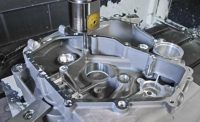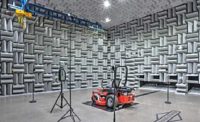Making things smarter is all the rage in manufacturing these days—be it the machines on the assembly line, or the overall plant itself. Rolls-Royce Deutschland (RRD), however, is going one step further. It is focused on developing an IntelligentEngine, which is connected to and aware of other engines, its support ecosystem and its customer airline.
Designing such an engine is a multiyear endeavor that will cost millions of dollars and present numerous challenges to the manufacturer’s engineers. Aware of this, RRD last year implemented Knowledge Works, an artificial intelligence (AI)-based software from Altair Engineering Inc., to extract useful information from terabytes of real-time and historical engineering test data. The goal, according to Peter Wehle, head of innovation, research and testing at RRD, is to use this information to reduce new-engine weight and mass, while maintaining structural integrity.
“This [approach] enables us to bridge the gap between engineering and data science, and empower our engineers to truly be engineers,” says Wehle. “[They are now able to] focus on extracting the benefits of machine learning (ML) and AI from our data.”
Knowledge Works is a low-code data transformation and ML modeling platform that has since been incorporated into Altair’s Data Analytics Suite. Altair CTO Sam Mahalingam says the drag-and-drop software offers designers freedom and flexibility—especially at the start of the design process when the data can have a real impact on future production and testing stages.
“The software lets the design engineers think creatively while not having to worry about developing reams of code to try out new ideas and concepts,” says Mahalingam. “They can try new things and get instant feedback.”
Both parties are hopeful that using ML and AI will significantly reduce the number of sensors needed to obtain present and future data, thereby saving RRD millions of euros annually. According to Mahalingam, the software lets engineers choose the data they want from a data silo, select the algorithms they want to employ and decide whether or not they want to use a neural network to train an ML model.
“Altair came up with a disruptive meshless structural analysis tool, and also added a range of data analytics tools to their portfolio,” explains Wehle. “The next step is to connect these tools to unlock the full potential for extremely fast and deep insights into structural system behavior.”
Wehle notes that the disruptive tool is based on the interaction between a communication endpoint of the engine simulation and neighboring points. It carefully analyzes the effects of loads on physical structures.
The IntelligentEngine project represents the second collaboration of the two companies. Mahalingam even calls it “a natural extension” of the work that Altair did in 2017 for RRD’s UltraFan next-gen engine platform. In that project, Altair developed and employed simulation tools and methods with a focus on weight reduction, fuel efficiency and reduced noise.
Another key product in Altair’s Data Analytics Suite is SmartWorks. This software uses AI, analytics and the Industrial Internet of Things to help end-users improve production quality, develop connected product lines and optimize maintenance schedules.
The software allows users to build analytic workflows through visual pipelining, with previews at each step. It offers generated-code transparency, and the flexibility for engineers to add their own code through pipelines or notebooks.
Through the use of AI and ML, Altair’s software helps engineers significantly shorten design response time. For more information on data analytics software, call 248-614-2400 or visit www.altair.com.








